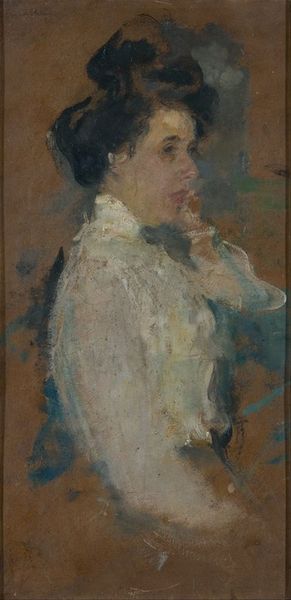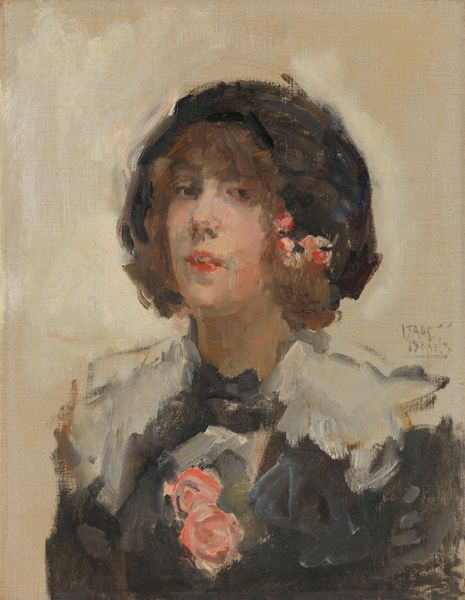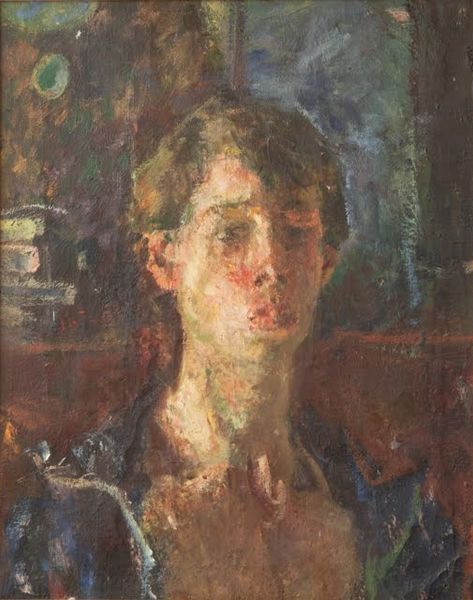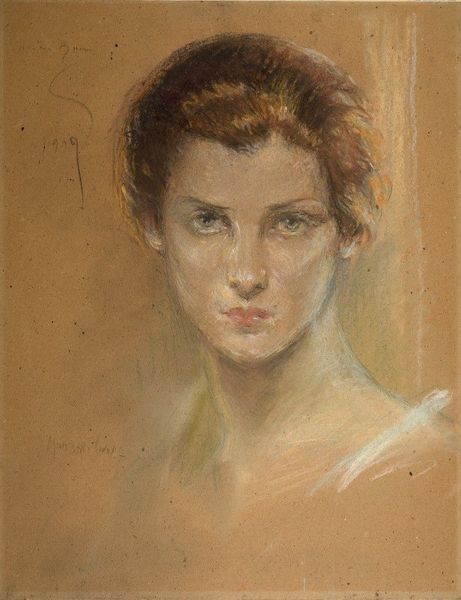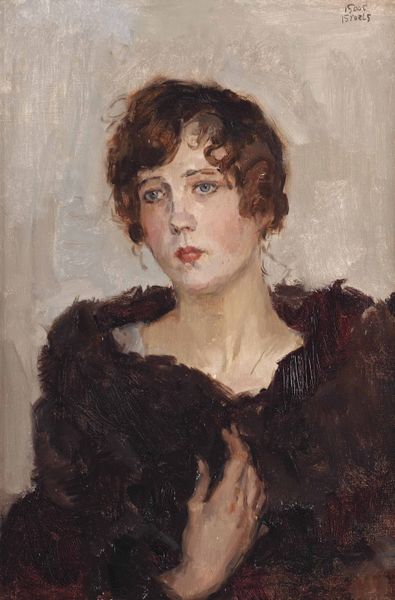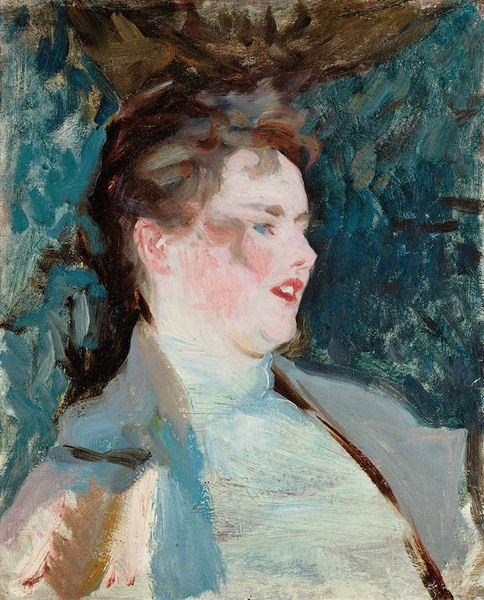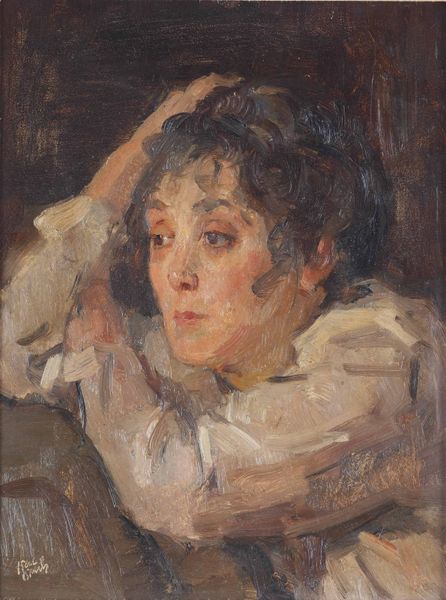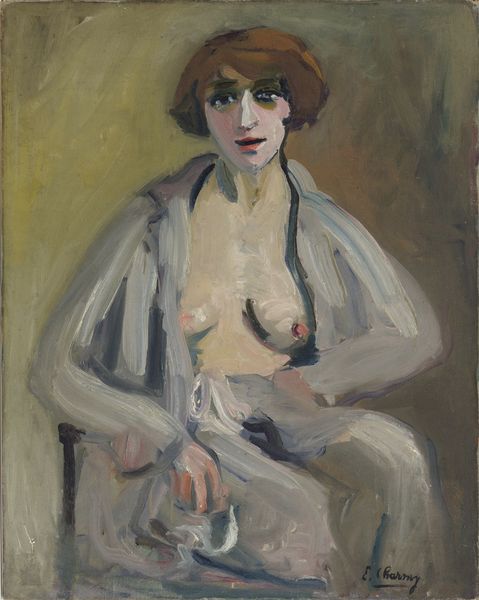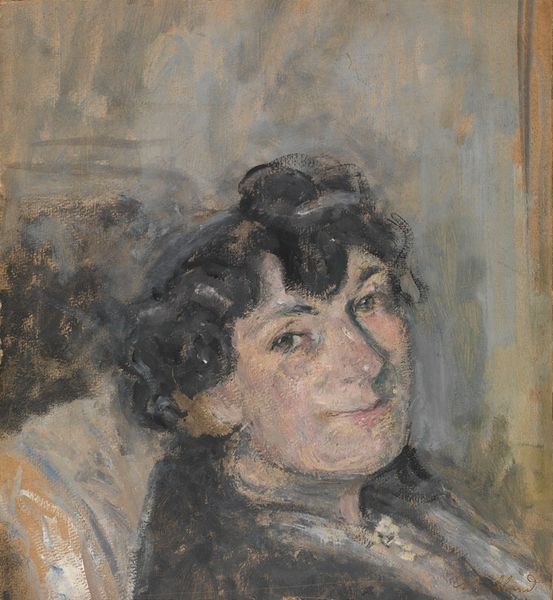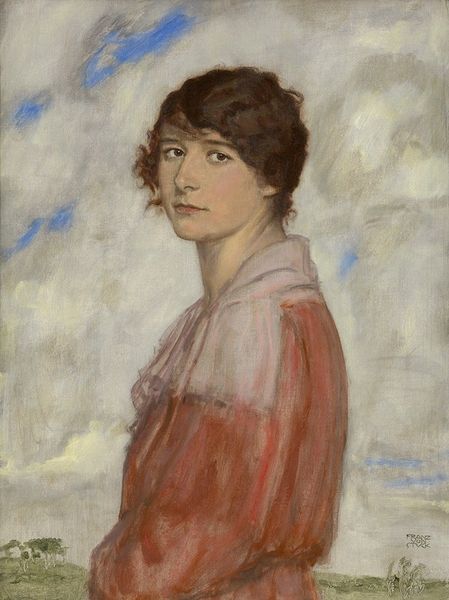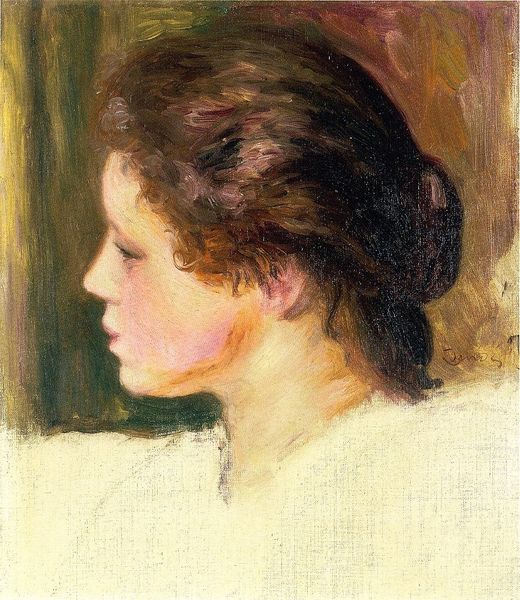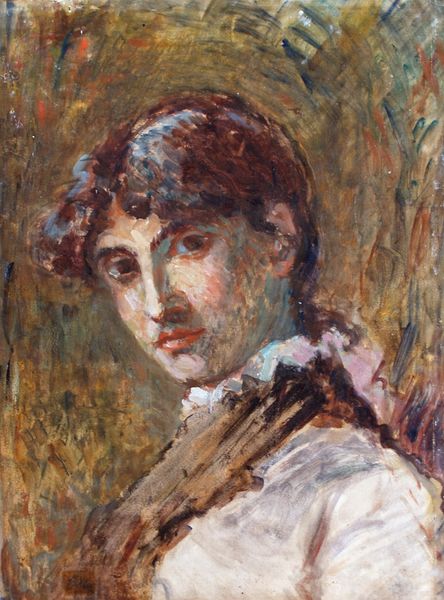
Copyright: Public domain
Curator: This is Isaac Israels' "Young Woman," painted around 1920. It’s an oil painting and is currently held at the Centraal Museum in Utrecht. Editor: Immediately, I’m struck by the soft, almost ethereal quality. The palette is restrained, mostly whites, yellows, and browns. It conveys a delicate, melancholic mood. Curator: Yes, Israels was master of light and capturing fleeting moments. The brushstrokes are loose, giving a sense of spontaneity that’s typical of Impressionism, even though it was considered a bit outdated at the time. Note how the light catches the side of her face, defining her features with minimal lines. Editor: The woman’s gaze seems distant. Given the historical context of the 1920s—the aftermath of the First World War, the burgeoning women’s rights movements—one might read that wistful expression as reflective of the societal shifts occurring for women at that moment. Her bobbed hairstyle was rather new and considered rather risqué! Curator: Certainly, one could argue that her short hair challenges traditional notions of femininity. However, formally speaking, the emphasis remains on pure aesthetic quality—how the curves of her jawline harmonize with the angle of her neck and shoulders. Editor: But isn't the way we perceive beauty always shaped by our cultural norms? Looking at her attire—a simple, perhaps unstarched shirt—speaks of an evolving understanding of female agency and their place in the professional and intellectual world. She’s in simple attire, not gussied up for the male gaze. Curator: A valid point. But also consider how Israels manipulates texture with oil paint; there's a certain tension between areas that are smoothly blended versus the visible, rapid strokes elsewhere. It all speaks to Israels’ confident technique, the hand of a true master of Impressionist portraiture. Editor: Absolutely. I appreciate how you’ve drawn our attention to the subtle ways Israels constructs form with color and light. However, looking at it, I see not just a portrait but also a window into the changing realities and evolving identities of women during this period. Curator: It is through such differing approaches we continue to discover new insights into what a work such as this represents. Editor: Indeed; it's always enriching to hold those multiple viewpoints, those visual textures together in mind.
Comments
No comments
Be the first to comment and join the conversation on the ultimate creative platform.
